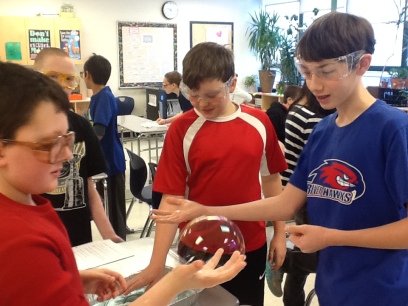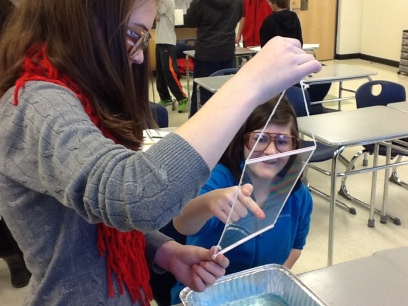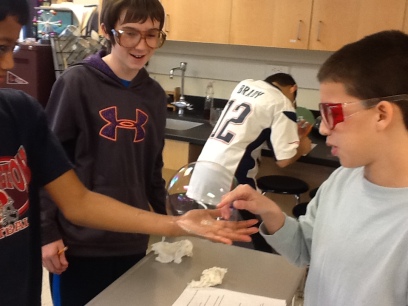This post originally appeared on the Marshall Simonds Middle School Blog
Students in Mrs. Pratt’s 7th grade science class are learning about the properties of the cell membrane.
To help students understand the dynamic functions as well as the incredible structure, Mrs. Pratt created a hands-on lab that allows students to explore a simulated cell membrane by using bubbles! The lab asks students to hypothesize how (in what ways) can a soap bubble represent or simulate the structure and function of a cell membrane.
Soap, like cell membranes, is made of long molecules. One end of the molecule mixes easily with water (a property known as “hydrophilic”), the other end doesn’t mix easily (a property known as “hydrophobic”). As students learn this activity, those different ends account for the way both cell membranes and bubbles form, the shape they take, and how they allow things to pass through them.




No comments:
Post a Comment